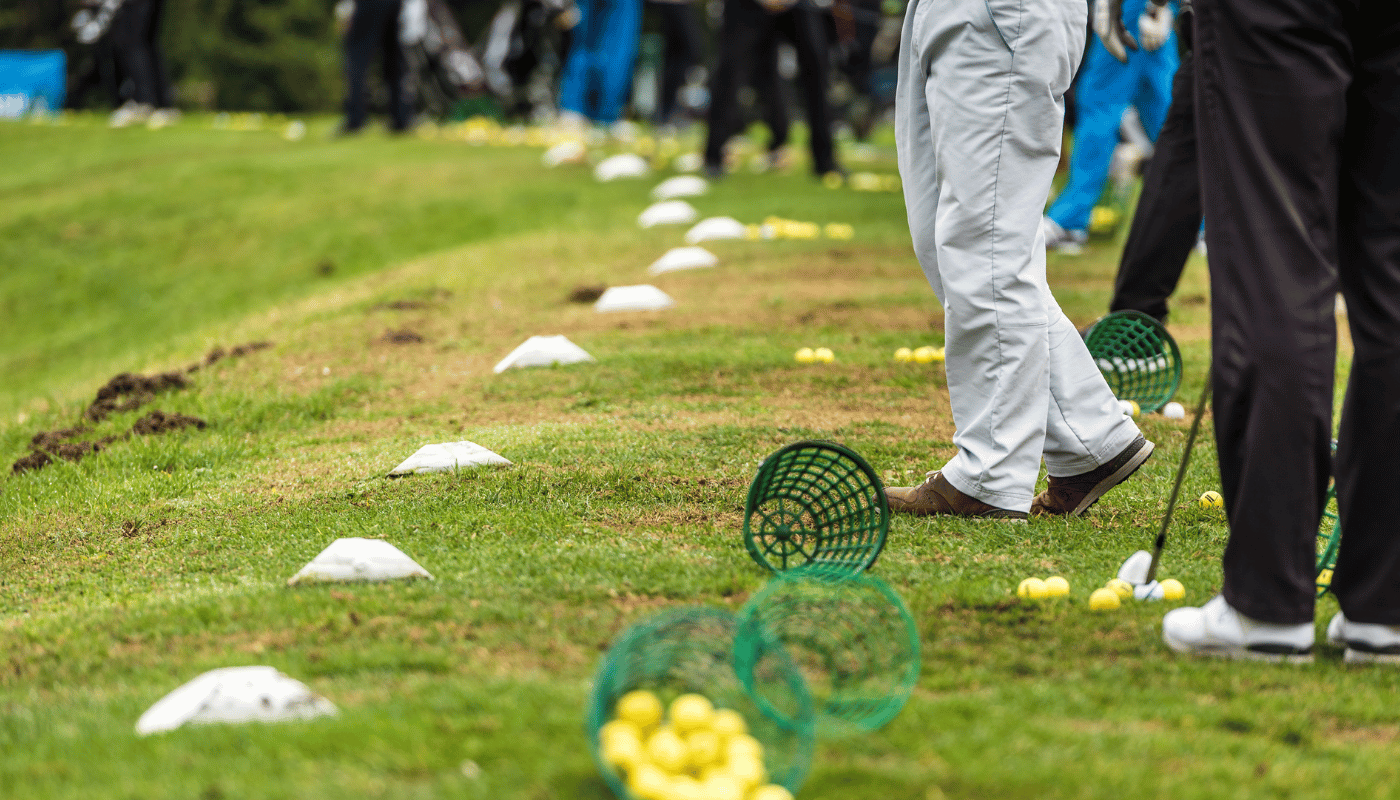Golf tournaments have long captured the interest of sports enthusiasts worldwide, drawing millions of viewers to follow their favorite players as they navigate challenging courses. These events are renowned not only for their high stakes and thrilling competition but also for their carefully structured schedules. Understanding how long are golf tournaments is essential for fans, participants, and organizers alike, as the duration influences everything from player preparation to audience engagement.
Typically, professional golf tournaments span several days, accommodating rounds of play that determine the ultimate winner. However, the exact length can vary based on the event’s format, scale, and level of competition. This article delves into the factors that define tournament durations, exploring professional and amateur contexts, the evolution of tournament lengths, and the various external factors that come into play.
By the end of this discussion, readers will gain a comprehensive understanding of the typical durations of different types of golf tournaments and the reasons behind these variations. This knowledge provides valuable insights for anyone looking to appreciate the intricacies of the sport or plan their participation effectively.
Standard Length of Professional Golf Tournaments
Professional golf tournaments, particularly those at the highest level, follow a well-defined structure that emphasizes consistency and challenge. Typically, these tournaments span four days, beginning on a Thursday and concluding on a Sunday. Each day consists of an 18-hole round, adding up to a total of 72 holes over the course of the event. This standard format ensures a thorough test of skill, endurance, and strategy for all participants.
Events such as the PGA Tour and The Open Championship adhere to this structure, showcasing some of the world’s best golfers as they compete under various conditions. For instance, the Masters Tournament in Augusta, Georgia, follows the same four-day format, drawing millions of spectators both on-site and through broadcast. In these events, the duration is meticulously planned to provide an optimal balance between competition and audience engagement.
However, how long are golf tournaments can vary slightly due to unforeseen circumstances. Weather delays, for example, may extend the schedule, requiring additional rounds or a postponed final. Playoffs, which are often used to determine the winner in the event of a tie, can also impact the duration, sometimes stretching into additional days. Despite these variations, the four-day schedule remains the cornerstone of professional golf tournaments.
The inclusion of practice rounds and Pro-Am events before the official tournament also adds to the overall length of the event for players and organizers. Practice days allow golfers to familiarize themselves with the course, while Pro-Am rounds give amateur players the opportunity to play alongside professionals. While not part of the official competition, these days are integral to the overall structure of professional tournaments.
Variations in Tournament Lengths Across Different Format
By maintaining this predictable format, professional golf tournaments have become iconic fixtures in the sports calendar, offering both fans and players a clear understanding of what to expect. From the first tee-off on Thursday to the trophy ceremony on Sunday, these events are designed to maximize excitement while ensuring a fair and comprehensive test of the athletes’ abilities.
Variations in Tournament Lengths Across Different Format
While the four-day structure is the hallmark of professional golf tournaments, the duration can differ significantly based on the format of the competition. Each format brings its unique set of rules and challenges, influencing how long are golf tournaments in various contexts.
Before diving into the variations, it’s important to understand the three most common formats:
- Stroke Play: The most common format in professional tournaments, where players aim to complete the course in the fewest strokes over four days.
- Match Play: A head-to-head format where players compete to win individual holes rather than the entire course.
- Pro-Am Tournaments: Events where professionals and amateurs play together, often completed in one or two days.
Tournament Formats and Typical Durations:
- Stroke Play: Usually lasts four days, with 18 holes played daily.
- Match Play: Can vary between one and four days, depending on the number of rounds required.
- Pro-Am Tournaments: Typically last one or two days, often preceding a larger professional event.
- Scramble Tournaments: Informal events, often lasting a single day, focused on team-based play.
- Club Championships: Local events lasting one to three days, depending on the level of competition.
The flexibility in formats is essential to accommodating different audiences and competition levels. Match play tournaments, for example, might conclude earlier if a player dominates the match without requiring all the scheduled rounds. Similarly, Pro-Am events are structured to provide a fun yet competitive atmosphere, often concluding in a single day to fit into the broader tournament week.
However, larger-scale tournaments like the Ryder Cup showcase extended schedules due to the complexity of team-based match play formats, often lasting up to five days. In contrast, local club events may only require a single weekend, making them more accessible to amateur players.
The diverse array of formats ensures that golf remains an inclusive and dynamic sport. Regardless of the structure, each tournament’s duration reflects its unique purpose, from testing professional skills to fostering community engagement among amateurs.
Factors Influencing the Duration of Golf Tournaments
The duration of golf tournaments is not always predictable, as several external and internal factors can significantly influence the schedule. While most tournaments adhere to a standard format, unforeseen events or structural variations often result in deviations. Understanding these influencing factors helps provide a more nuanced answer to how long are golf tournaments.
Weather conditions are one of the most common variables affecting tournament duration. Rain, thunderstorms, or strong winds can cause delays or even the suspension of play. For instance, tournaments like The Open Championship, held in coastal regions, are often subject to weather interruptions. In extreme cases, organizers may extend the event to ensure all players complete the required rounds.
Another critical factor is the difficulty of the golf course. Courses with challenging layouts, such as Augusta National or Pebble Beach, often require players to take more time for each hole. The length of the course, the number of hazards, and even green speeds can collectively influence how long it takes for rounds to be completed.
Factors Influencing Tournament Duration
| Factor | Impact on Duration |
| Weather Conditions | Can cause delays or suspensions, extending the tournament. |
| Course Difficulty | Challenging layouts may increase the time taken per round. |
| Number of Participants | Larger fields require more time to complete each round. |
| Playoffs | Extra holes to resolve ties can extend the final day. |
| Time of Year | Shorter daylight hours may limit playing time per day. |
Additionally, the number of participants directly correlates with tournament length. Professional events often have over 150 competitors in the initial rounds, requiring staggered tee times. As the field narrows after the cut, the pace of play increases, but larger fields inevitably result in longer initial days.
Finally, playoffs are a significant factor in determining how long are golf tournaments. When players are tied after the final round, tournaments may enter sudden-death or multi-hole playoffs. These dramatic moments add excitement for spectators but can extend the tournament by several hours or even an extra day.
By accounting for these variables, organizers aim to balance tradition, fairness, and practicality, ensuring tournaments run smoothly while accommodating unforeseen challenges.
Comparison Between Professional and Amateur Tournament Durations
The duration of golf tournaments varies significantly between professional and amateur levels, reflecting differences in competition structure, participant skill levels, and organizational priorities. While professional tournaments are often multi-day events designed to test players’ endurance and consistency, amateur competitions are typically shorter and more flexible in format.
Professional tournaments like the PGA Tour or The Open Championship generally span four days, with players competing in 18-hole rounds each day. This rigorous schedule ensures that the most skilled and consistent players rise to the top. These events also incorporate additional days for practice rounds and Pro-Am sessions, making the overall experience longer for participants and organizers.
In contrast, amateur tournaments are much shorter. Local club championships or charity scrambles often conclude within a single day or a weekend. These events cater to players with varying skill levels and limited availability, making shorter formats more practical. For example, a typical club event might consist of a single 18-hole round or, at most, two rounds spread across a weekend.
One notable distinction is the level of preparation involved. Professionals undergo extensive practice sessions and course analysis, contributing to the extended schedule. Amateurs, on the other hand, often participate with minimal preparation, focusing on enjoying the experience rather than competing at an elite level.
Despite these differences, both professional and amateur tournaments share the common goal of fostering competition and community. While professional events demand endurance and precision, amateur tournaments prioritize accessibility and enjoyment. Understanding how long are golf tournaments in each context highlights the diversity within the sport and its ability to cater to different audiences.
Historical Changes in Golf Tournament Durations
The length of golf tournaments has evolved significantly over the history of the sport, reflecting broader changes in professional competition and audience expectations. Early golf tournaments were less standardized, often featuring formats and durations tailored to local customs or player preferences. For example, some of the earliest Open Championships in the 19th century consisted of only 36 holes played over two days, a far cry from the 72-hole standard seen today.
As professional golf gained prominence, especially with the establishment of the PGA Tour in the 20th century, tournament durations became more uniform. The introduction of the four-day, 72-hole format ensured a consistent challenge for players while maximizing spectator engagement. This format also allowed for the introduction of televised coverage, which brought the sport to a global audience and further solidified the four-day structure as the gold standard.
Notably, certain tournaments, like the Ryder Cup and Presidents Cup, introduced team-based formats that required extended schedules. These events highlighted the adaptability of tournament durations to accommodate new competitive dynamics.
Modern advancements in technology, such as precision weather forecasting and improved course management, have helped mitigate delays, ensuring tournaments stay closer to their planned schedules. However, the occasional playoff or extreme weather event still reminds us that no schedule is entirely immune to disruptions.
Today versus in the past underscores the sport’s adaptability. From humble beginnings with shorter events to the highly organized multi-day spectacles of the modern era, golf tournaments have grown in complexity and appeal, reflecting their evolution alongside the sport itself.
Conclusion
Golf tournaments are carefully structured events that test the endurance and skill of players while providing excitement for fans. Throughout this article, we explored the standard durations of professional tournaments, variations in formats, factors influencing tournament length, and the differences between professional and amateur events. These insights provide a well-rounded perspective on how long are golf tournaments and the reasons behind their schedules.
Professional tournaments, with their iconic four-day structure, remain the cornerstone of competitive golf. However, variations in formats, such as match play and Pro-Am events, demonstrate the sport’s flexibility in catering to different audiences. Factors like weather, course difficulty, and playoffs add complexity, occasionally extending tournament lengths beyond their planned durations.
The historical evolution of tournament durations reflects the sport’s growth and the increasing demands of a global audience. From shorter early competitions to the highly organized events of today, golf has consistently adapted to meet the needs of players and fans alike.
Understanding these nuances allows players, organizers, and spectators to fully appreciate the intricate planning that goes into each tournament. Whether attending a weekend club event or following a major championship, knowing the typical duration enhances the experience and deepens one’s connection to the sport.







Leave a Reply